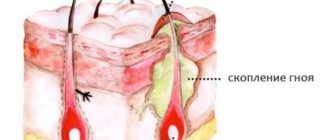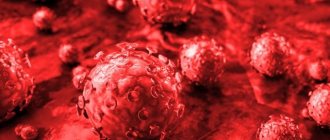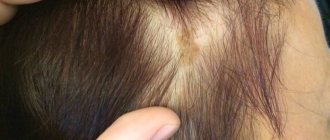Removing the root of a wart is a procedure for complete excision of skin tissue mutated under the influence of the human papillomavirus. It is an integral part of HPV treatment, because reduces the likelihood of disease relapse. The procedure can be carried out using various methods of traditional and folk medicine. All of them differ in the degree of effectiveness, speed of achieving results, accessibility and level of safety. This article provides detailed information on how to remove the root of a wart using various methods.
Structure of a wart
Papilloma is a keratinized, compacted spot that has visible boundaries. It can be soft or rough to the touch. Localization is of great importance.
The tissues of the growth differ in color and can be yellowish, red, or brown. The structure of the growth indicates the obligatory presence of a base. The roots of a wart are part of a neoplasm that is located in the deep layers of the skin. When a growth appears, its root penetrates the vessels and “pulls” from them the necessary elements to nourish the papilloma.
The roots of warts that have appeared recently are white or red. They are represented by thin threads that turn black over time. With mechanical removal, it is almost impossible to completely pull out the root. In addition, if it penetrates deep into the cells of the epidermis, there is a possibility of scars appearing. What does the root of a wart look like in cross section:
- The top layer of growth, slightly rising above the skin.
- Epidermis
- Dermis.
- Directly roots.
- Fatty fiber.
The structure of the roots is branched, thread-like. When mechanical removal is performed, part of the base may remain deep under the skin. Under favorable conditions, the residue will begin to germinate, promoting the appearance of a new growth.
What means will help the growth dry to the root?
You can get rid of papillomas at home. To do this, you need to purchase a special drug or prepare your own remedy according to a traditional medicine recipe. Removing tumors at home is much more convenient for most people. But it must be carried out with special care and caution, since removing the root can sometimes be quite problematic.
Preparations are widely used that allow the growth to dry out. After this it is much easier to remove it. This group includes:
- Super Celandine. A budget-friendly but aggressive remedy for eliminating skin growths. Allows you to burn the formation down to the very base. Leaves noticeable burn marks.
- Dermavit ointment is also an aggressive substance. The wart is treated with ointment. This should be done very carefully, avoiding contact with healthy skin. This drug is prohibited from removing growths on sensitive areas of the body, such as the root of the tongue, throat, groin, and eyelids.
- Ferozol is a burning antibacterial drug. Actively affects the tumor and its base. When processing, precautions should be taken.
To prevent the development of complications, after the appearance of a growth, a person needs to consult a doctor.
There is no need to pull out the tumor yourself. This will not only complicate the removal process, but will also cause dangerous inflammation. The article has been verified by the editors
Causes and types of warts
The growths that cover the skin are the result of infection with a virus. There are more than 100 types of HPV, which contributes to the appearance of warts. The infection enters the human body through skin wounds during contact with a sick person. It is easy to become infected in public places where the virus is transmitted through shared items. The following types of warts are distinguished:
- Vulgar, or simple, growths have a dense structure, a shade close to the color of the skin. Appear on the knees, hands, fingers.
- Flat warts resemble smooth spots with a flat surface that rise slightly above the skin. Usually appear in teenagers.
- Plantar or plantar warts. Their roots penetrate deep into the skin. Outwardly, they resemble hard spots that appear on a person’s feet and cause discomfort while walking. In some cases, the growths protrude strongly above the skin and have a “terry” structure.
- Filiform papillomas visually resemble papillae that grow in length. The color varies from natural to brown, the structure is elastic. These warts have small roots.
- Pointed growths affect the genitals and are distinguished by a conical shape. They can grow quickly, provoking destructive changes in adjacent tissues. When such formations appear, immediate treatment is indicated.
Warts have a characteristic appearance. They are easily differentiated from each other.
The presence of a wart with black roots indicates an old form of the disease. But sometimes this can be a defensive reaction to infection, leading to the spontaneous death of the growth. Blackening of the roots occurs when the treatment is properly selected or when the upper part of the growth is damaged.
Root blackening
The black root of the tumor in most cases is a sign of an advanced stage of development of the papillomavirus. But at the same time, the reason for its blackening often becomes:
- the reaction of the body’s protective functions to a viral disease, which leads to the death of the formation and atrophy of its base;
- changes in hormonal levels, leading to blackening of not only the shaft of the wart, but also its outer part;
- properly selected treatment that causes rapid death of viral cells and death of the growth root;
- tearing out and damaging its base, which is often accompanied by the development of pathogenic microflora inside it;
- the initial stage of skin cancer, during which the degeneration of infected cells into cancer cells begins.
Diagnostics
Examination of the emerging tumor is necessary to determine the exact type of human papillomavirus and to subsequently carry out the correct treatment. Which doctor should I contact for help? If a growth of any shape or color appears on the skin, you need to visit a dermatologist. Before removing the root of a wart on a finger, it is necessary to undergo diagnostics:
- Polymerase chain reaction (PCR) is a test that detects the presence of viral DNA in the blood. The degree of oncogenicity of the strain and its quantitative indicator are established.
- When removing the root of a papilloma on a finger or other part of the body, a histological examination may be prescribed. In this case, material is collected for analysis immediately before removal of the wart and after the operation. All affected skin layers are examined. A biopsy determines the benign quality of the seals and the possible degree of their degeneration.
- Digene HPV test is the most reliable HPV test; it makes it possible to detect a specific strain of the virus, the degree of oncogenicity, and concentration in tissues. The results obtained help to build the most accurate prognosis of the disease.
Features of warts to damage
A wart is a growth on the skin that is quite easily injured.
This may cause pain and even bleeding. Most often, changes in the integrity of the wart occur in those parts of the body where the growth is regularly exposed to mechanical stress - hands, feet, thighs and others. The growth can also be picked off, torn off or trimmed during shaving. It happens that the injured growth dries out painlessly and leaves no trace of itself. But it happens that even if you don’t touch the wart too much if it rubs against clothing, it suddenly falls off or gets damaged, and it hurts, bleeds and becomes inflamed. This situation is related to the structure of the growth, for example, it has a thin knife or has already been injured before.
We recommend reading:
- Dry wart
- Types of warts
- Laser removal of warts
A peeled growth is also dangerous. After all, it is through a wound (crack, scar) that the infection can be transmitted to one of the other people. Therefore, if you are aware that you are affected, try not to touch others, and treat the injured area with hydrogen peroxide and cover it with an adhesive plaster.
First, let's figure out what happens if you accidentally pick off or decide to cut off a wart, and what to do about it?
- Bleeding. It is often very difficult to stop.
- It is very easy for an open wound to become infected with a fungus or other infections, the entry of which into the bloodstream is very dangerous.
- Scars. There is a more aesthetic side here. If the papilloma has formed in a visible place, the scar can cause discomfort.
Is it possible to cut off warts on your own and without a doctor’s advice? Then you should carry out a few simple manipulations, and then contact a specialist:
- first treat the wound with antiseptics;
- then apply a bandage so that the scar heals normally and does not come into contact with the environment, or cover it with a bactericidal plaster;
- consult a specialist to find out whether the severed papilloma poses any danger.
Additionally, you need to find out from your doctor all the recommendations for combating HPV. Therefore, if you have condylomas in any place, it is best to remove them immediately. Only experienced specialists can do this without harm to health. Moreover, a pre-excised wart guarantees that it will no longer become malignant (if it is cut out from the roots).
How to remove the root of a wart
When removing a wart from its roots, small shoots may remain. There are numerous ways to remove such processes, but you must first undergo an ultrasound, which will show the depth of the lesion. Based on the results of the examination, the most optimal operation is selected.
If the root has grown greatly, the following methods will help to completely get rid of it:
- Freezing with nitrogen.
- Electrocoagulation.
- Laser therapy.
- Radiocoagulation.
In advanced forms of the disease, a surgical operation is indicated, during which complete excision of the wart along with the root is performed. Removing the growth with a scalpel is not a popular treatment method, but it is relevant if more gentle procedures have not brought benefit. After excision of the papilloma, a scar remains, which is a disadvantage of the procedure. Traditional medicine is also effective in eliminating the roots of warts. How to eliminate growths and their remaining processes - at home and in the clinic, each person decides independently.
Doctor's help
Laser removal of warts along with the roots is quick and painless. Laser therapy is carried out in a hospital setting. Laser removal of the roots of a plantar wart, which most often causes discomfort to a person, is accompanied by the presence of minimal scars. In addition, relapse of the disease is almost 100% excluded. The accuracy of the method is ensured by maximum control of the depth of penetration of the beam and the area of its impact.
How else can you remove the root of a wart? Cryotherapy is widely used. The growth is exposed to low temperatures. The seal freezes and its structure is destroyed. A huge advantage of the method is the absence of scars. With the help of freezing, papillomas with shallow roots are removed, since the doctor cannot control the exact depth of the cold. In addition, prolonged exposure to low temperatures can damage adjacent healthy tissue, leaving scars.
How to remove the root of a wart that has penetrated to a considerable depth, how to remove its remains? The neoplasm is large and in advanced form and is removed using a scalpel. In parallel with this, antiviral drugs, vitamins, and immunomodulators are prescribed to inhibit the activity of the virus and prevent it from manifesting itself externally.
Traditional methods
Warts with roots, especially in an undeveloped form, can be removed at home. Available means eliminate growths in a short time and painlessly.
Folk methods of removal are effective; a striking example is celandine juice. It is applied to the affected area several times throughout the day. The components of the plant soften the keratinized part of the papilloma, enter deep into the roots and destroy their cells. When the upper part of the growth falls off, the juice should be used to treat the remaining wound. This way, the root will continue to deteriorate, and its individual fibers can be easily removed with tweezers.
Treatment of warts with roots involves the use of garlic. The product is crushed to a mushy state, wrapped in a bandage and secured to the growth. Garlic juice has an aggressive effect on the wart and its roots. It is important to use fresh onion juice, which should be used to wipe the tumor several times a day.
How to remove the root of condyloma and warts? It is known that the human papillomavirus does not tolerate an acidic environment. To combat it at home, vinegar - table or apple cider vinegar - is often used. Compresses and cakes (vinegar and flour) are prepared on its basis. This method cannot be used during pregnancy.
The use of traditional medicine should be discussed with a specialist. Otherwise, removing the root from the wart can lead to complications.
Cryotherapy at home
To independently and safely remove the root of a wart that has not grown too deep into the dermis, you can use modern means for performing cryotherapy at home:
- spray CryoPharma
- Wartner Cryo aerosol;
- MaxiVart spray.
Inside the medicine cans there is a special substance that quickly and painlessly freezes the growth and helps it fall off. Basically, to remove a small tumor along with the root, you will need 1-2 freezing procedures. In more complex cases, you need to freeze the wart 3-4 times.
What happens if you don't remove a wart?
Papilloma tends not to bother a person for a long time. But such compactions are worth paying attention to, since seemingly harmless growths often turn into cancer. Even if the wart itself has fallen off, but the root remains, it is necessary to get rid of it.
The problem is that the development of many malignant tumors can be stopped with chemotherapy and medications. As for skin cancer, the only method of fighting it is timely removal of the growth.
When the root of the wart remains, over time you may notice suppuration or bleeding at the site of the former growth, pain or burning appears. In such a situation, it is necessary to seek qualified help and remove the root in a timely manner.
Risks arising from injury to the growth
What to do if a wart bleeds? What to do if a wart comes off? Why can’t you pick them and remove them yourself? Why did new formations appear again? All these questions arise after the job is done and the blood has flowed.
If the growth is damaged, the body risks getting an infection, which can lead to inflammation of the growth on the skin and even death due to blood poisoning.
Body temperature may also increase and the damaged area will be very painful. The formation of a bleeding wound will increase the pain effect.
When bleeding occurs, infected blood can get onto healthy skin, thereby creating an environment for the appearance of neoplasms. The wound will heal over time, but the scars and scars will remind you of themselves all your life.
Prevention
Maintaining personal hygiene will prevent the formation of papillomas. After contact with strangers, you need to wash your hands and use antiseptics. Any abrasions or cuts must be immediately treated with iodine, otherwise the microbes that get there may begin to actively multiply. An important aspect is proper nutrition, which will help strengthen the immune system and prevent the activation of the human papillomavirus. Various diseases must be treated promptly as they have a detrimental effect on the immune system.
When working with toxic products, it is imperative to use special equipment that will protect the skin from injury. In public places - swimming pools, saunas - you need to use only personal belongings.
Possible consequences
If a wart comes off and a person does not pay special attention to it, this can lead to unpleasant consequences. First, an infection may get there. Then the affected area will begin to rot and tear.
After the pus comes out, an open wound forms. When it heals, it will leave a scar.
What happens if you cut off a wart at home? The consequences of self-removal will not take long to come:
- bleeding wound;
- increased body temperature;
- painful sensations.
Symptoms of the disease
Warts themselves, both ordinary and with blackheads, as a rule, do not bring negative sensations, unless their location provokes constant friction of this area. Ordinary skin papillomas are small in size, usually about 0.2-0.6 cm in circumference, the shape of such growths is often round or semicircular, and the color is light to brown.
When several warts appear at once, there is a high probability of their further growth, which will lead to the merging of these formations into a single mosaic-type conglomerate. It is especially unpleasant for a person when warts begin to grow in the oral cavity, where their usual location is the outer corners of the mouth, the tip of the tongue, and the lateral and anterior parts of this area.
No less unpleasant are genital warts, which are genital warts - the papillary type, having a pale pink color. The base of such a growth is a thin stalk, on which a more voluminous papilloma with a sharp tip rests. It should be noted that for women such neoplasms and the papilloma virus are generally more dangerous than for men.
Important! If genital warts occur, you must immediately decide on their removal; the doctor will prescribe all the necessary examinations and refer you for this procedure.
Often people find black dots under the thin upper part of the wart, which frightens any person. However, there is no reason to be upset. Such inclusions appear at the base of the growth not immediately after its appearance, but only after some time. A wart with black dots is not dangerous, since these dark inclusions are the roots of this formation.
The papilloma itself has a fairly developed circulatory system, thanks to which the growth receives enough nutrients for active reproduction. The more black dots in a wart, the greater its root and ability to grow further and multiply.
If there is a constant increase in the number of blackheads in the formation, and the papilloma itself is constantly itching, itching and painful, it means that it is growing. It is plantar warts that are often characterized by such active growth and deep roots, and their removal is necessary at the initial stage of appearance.
The larger the formation, the longer the rehabilitation period will be after removal of the growth. A wart that has one black dot is not very dangerous, but it needs to be examined.
If the wart has turned completely black, this is a reason to be wary, since this is how the process of degeneration of a benign tumor into a malignant one manifests itself.
A visit to the doctor is necessary. The dermatologist will determine the oncogenic risk group and the degree of danger to the life and health of the patient.
Healing time
The recovery time for affected skin largely depends on the chosen means of removing the formation. Some methods guarantee the immediate and complete disappearance of warts, and some will leave behind a reminder in the form of a scar or welt. Naturally, we cannot exclude the individual ability of each individual person to regenerate. For some people, there is no trace of scars after a month, while for others, marks from even a light scratch remain for a long time. In addition, proper skin care after the procedure cannot be ignored. Following all the doctor’s recommendations will significantly reduce recovery time.
Removing tumors using microwaves remains a priority method. Upon completion of this procedure, only a crust remains, like a scratch, which will fall off the very next day, leaving no trace behind. Laser is also a very popular method. Despite the not-so-pleasant burnt smell during the procedure, this method will leave behind only a small scar, which will most likely disappear within a week.
Folk remedies and removing growths with liquid nitrogen, unfortunately, will leave their mark. The skin may not heal after these manipulations, and a small scar will remain at the site of the wart. However, both methods have undeniable advantages. The first is available to everyone without exception, and the second completely eliminates relapse, ensuring that a new tumor will not appear in this place again.
Surgery remains the most unpleasant outcome. It helps to get rid of dangerous and very annoying growths, but, like any operation, it will definitely leave its mark on the body. Removing a wart using this method requires the patient to carefully care for the wound until it heals completely. And do not neglect a couple of weeks of excessive caution. By not following your doctor's instructions, you risk permanently leaving an ugly scar on your skin or getting complications in the form of a festering wound.
Black wart on finger
Black warts can form in any part of the body: on the hands, on the face, in the groin, etc. Vulgar or flat warts usually form on the fingers; there are also periungual warts. These are traditional types of skin tumors, which in themselves are not dangerous, have light brown, flesh-colored, pinkish shades, so many people do not pay attention to them and do not treat them.
Even though a wart on the hands or fingers does not cause discomfort, it still requires removal. You can’t leave things to chance - in adults, warts on their own very rarely go away (in children much more often), so you shouldn’t wait until the tumor darkens, which will indicate the development of the process and the virus.
Vulgar and flat warts, which usually form on the hands, can be removed with folk remedies or pharmaceutical solutions with a cauterizing effect. But this applies only to those neoplasms that have a light rather than a dark shade. If you have dark warts, you should definitely contact a specialist.











